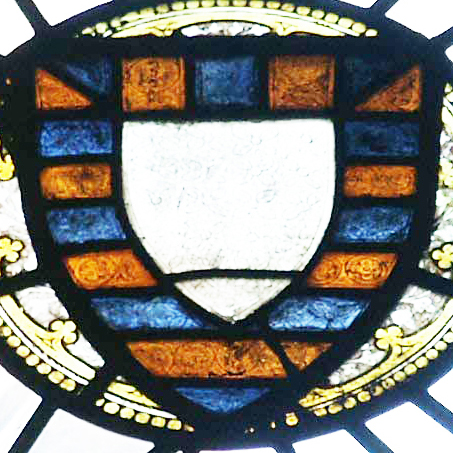
Wells Cathedral
Mortimer Heraldry
The coat of arms of Mortimer of Wigmore is quite difficult to describe exactly. Basically it consists of a series of blue and gold horizontal bands, the top band showing several vertical bands between two triangles in the top corners. Then a silver shield is set in the middle. The number of horizontal and vertical bands varies according to the date of the shield, the medium it is being displayed on, the available space and, probably, the whim of the person creating it. The colour of the small triangles is sometimes blue and sometimes gold.
There is one particular design that crops up many times in early examples of the arms and five examples of this design are shown here. It is blazoned as follows: azure three bars or, on a chief of the first two palets between two gyrons of the second, overall an escutcheon argent
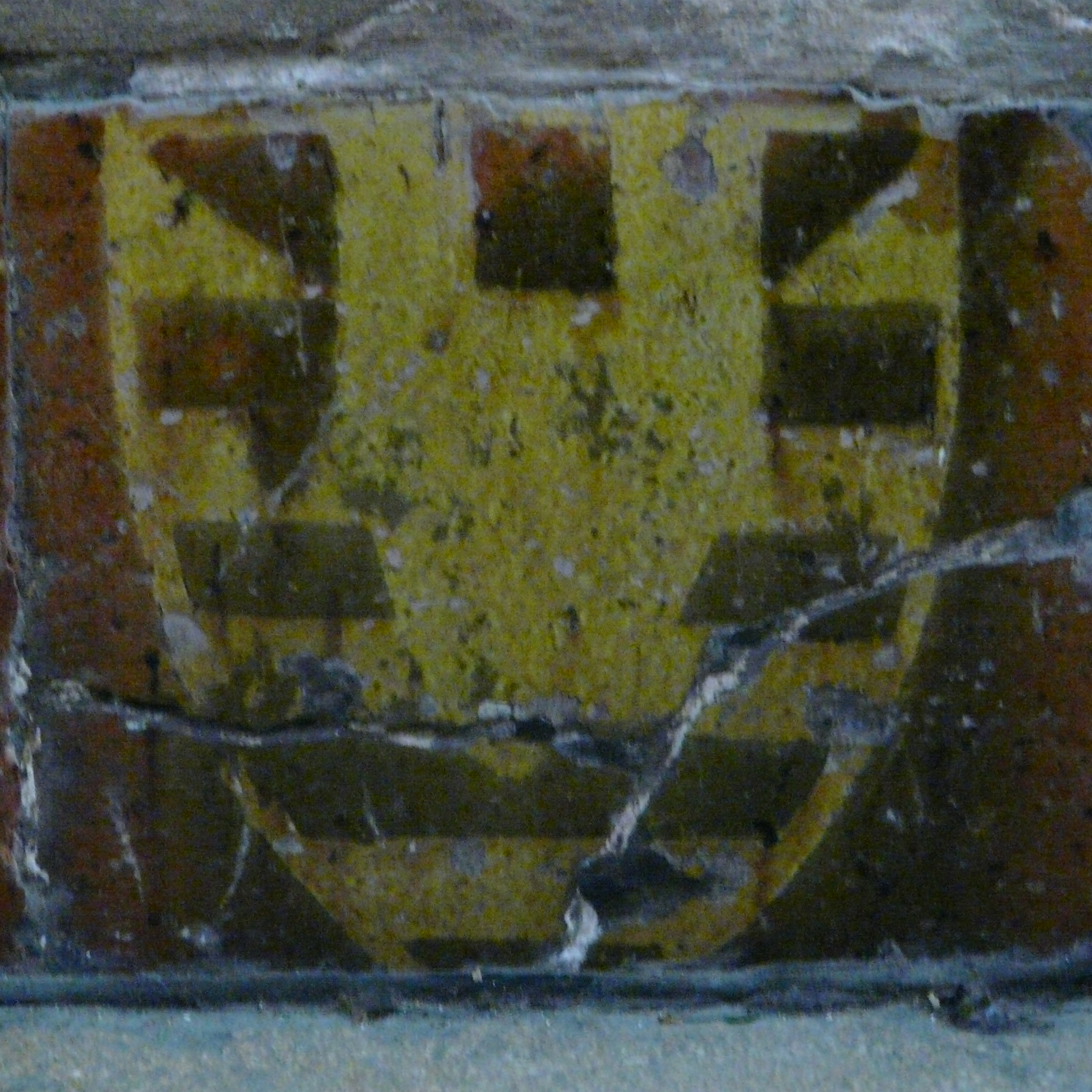
Bredon, Worcestershire
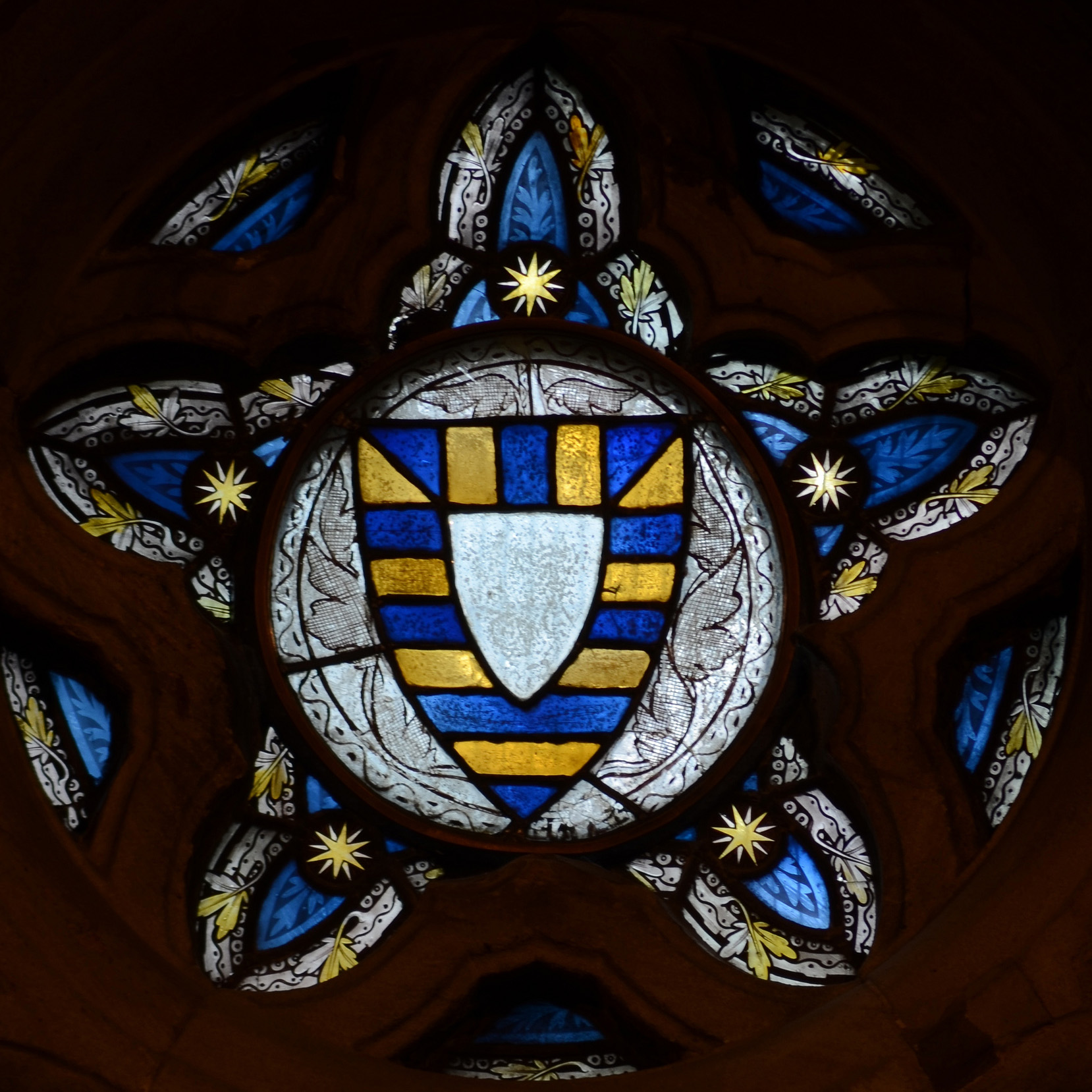
Ludlow
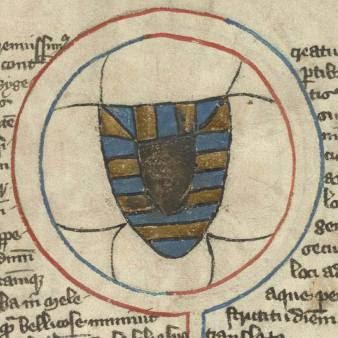
Wigmore Chronicle
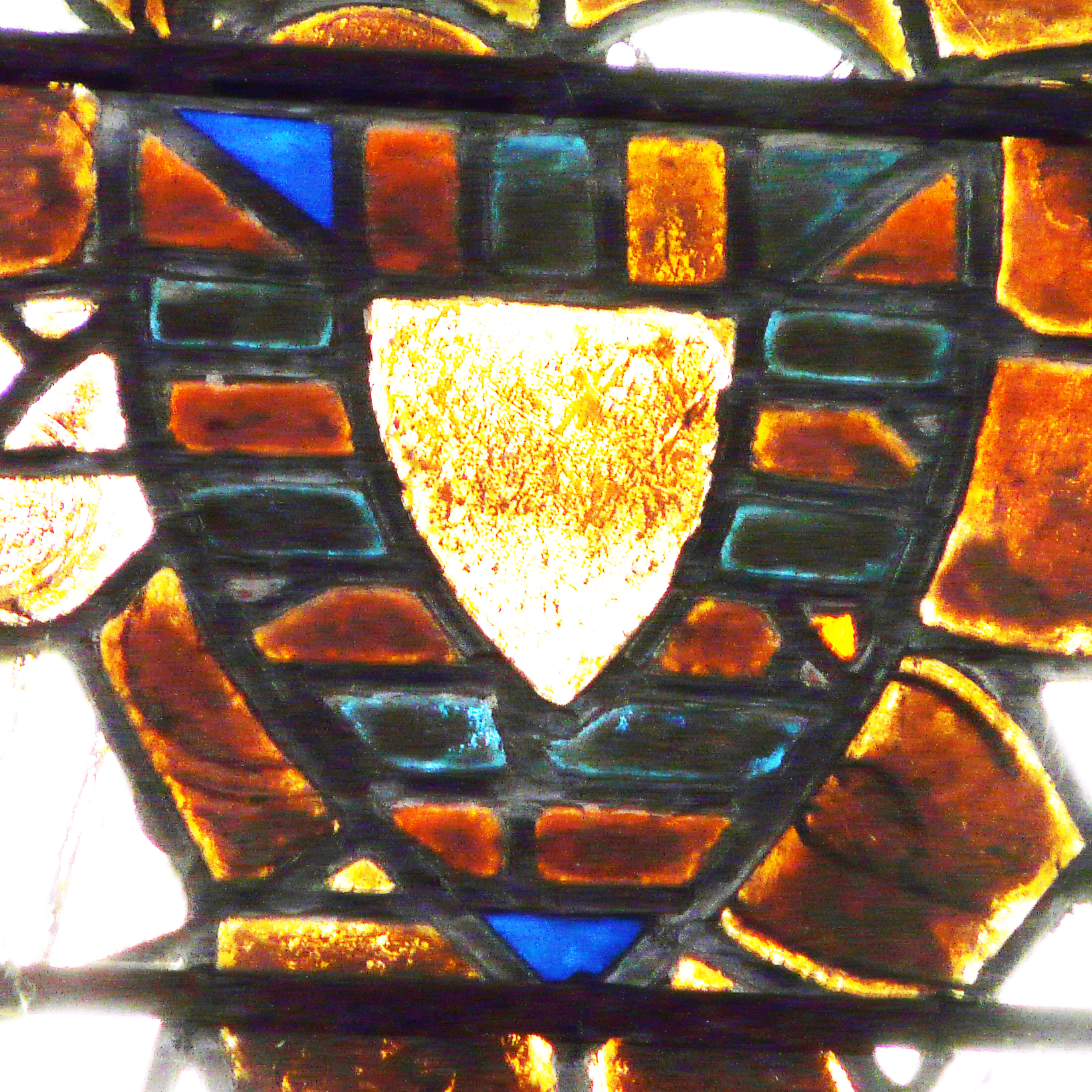
Tewkesbury
Despite the ubiquity of the design shown above, variations in the shield existed from an early period. Over time it became more common for the lower corner triangles to be blue rather than gold. 19th century re-creations of the medieval arms normally adopt this option, even when this conflicts with the original arms. So now the commonly accepted “arms of Mortimer of Wigmore” have blue lower triangles rather than gold.
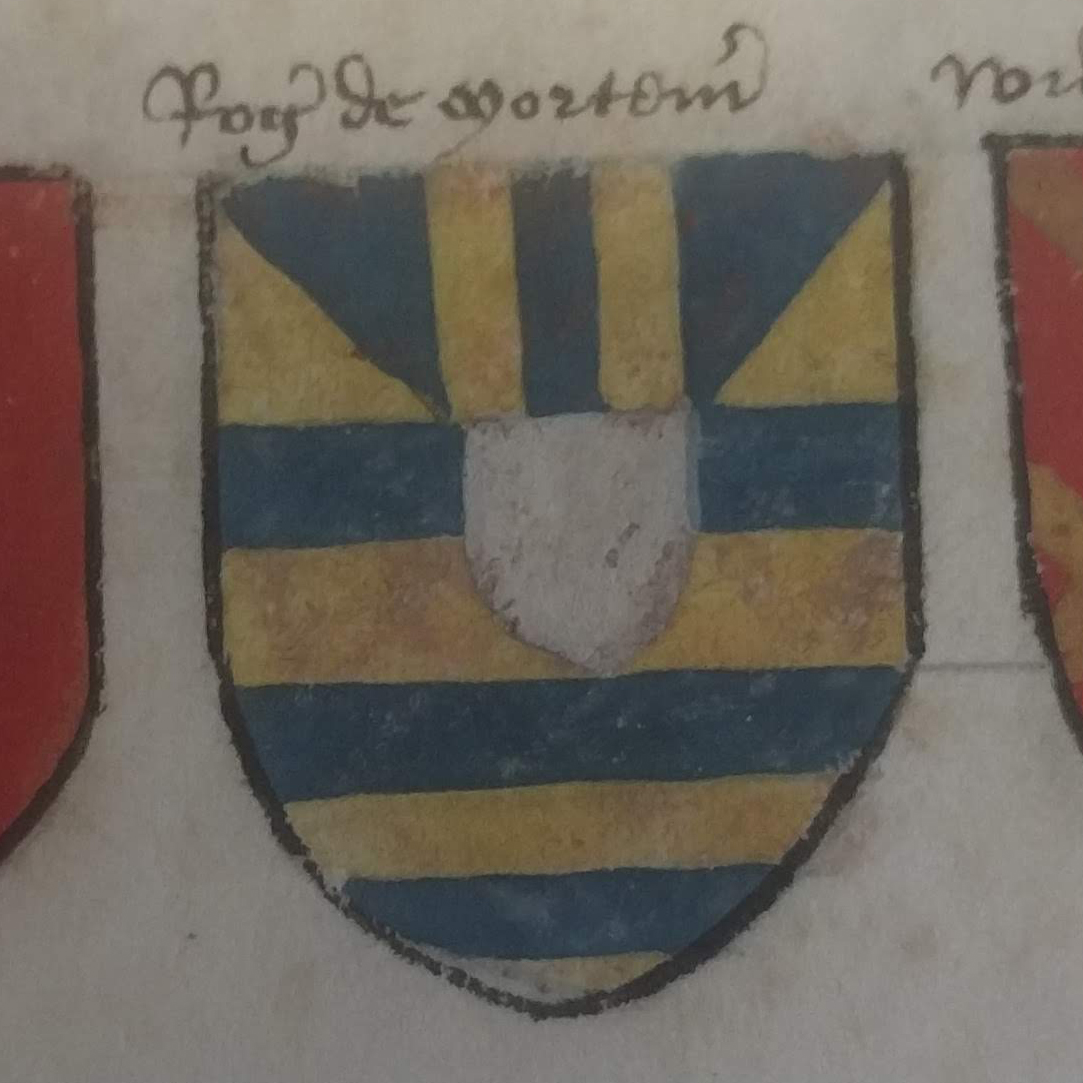
Arms of Roger Mortimer (d1282) from the Fitzwilliam copy of the Heralds Roll of 1270-80. There is one fewer horizontal band here.
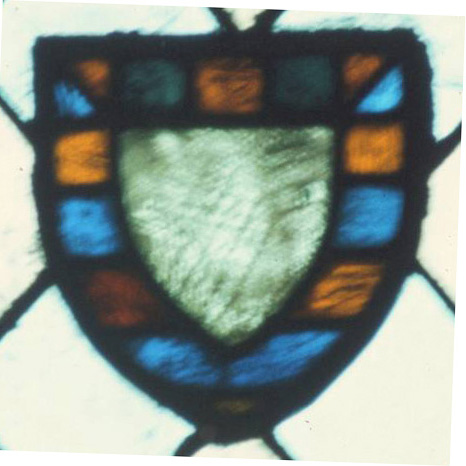
The wife of Edmund Mortimer (d1331) was a niece of Sir Robert Burghersh of Boughton Aluph in Kent and Edmund’s 14thC arms are in the church there.
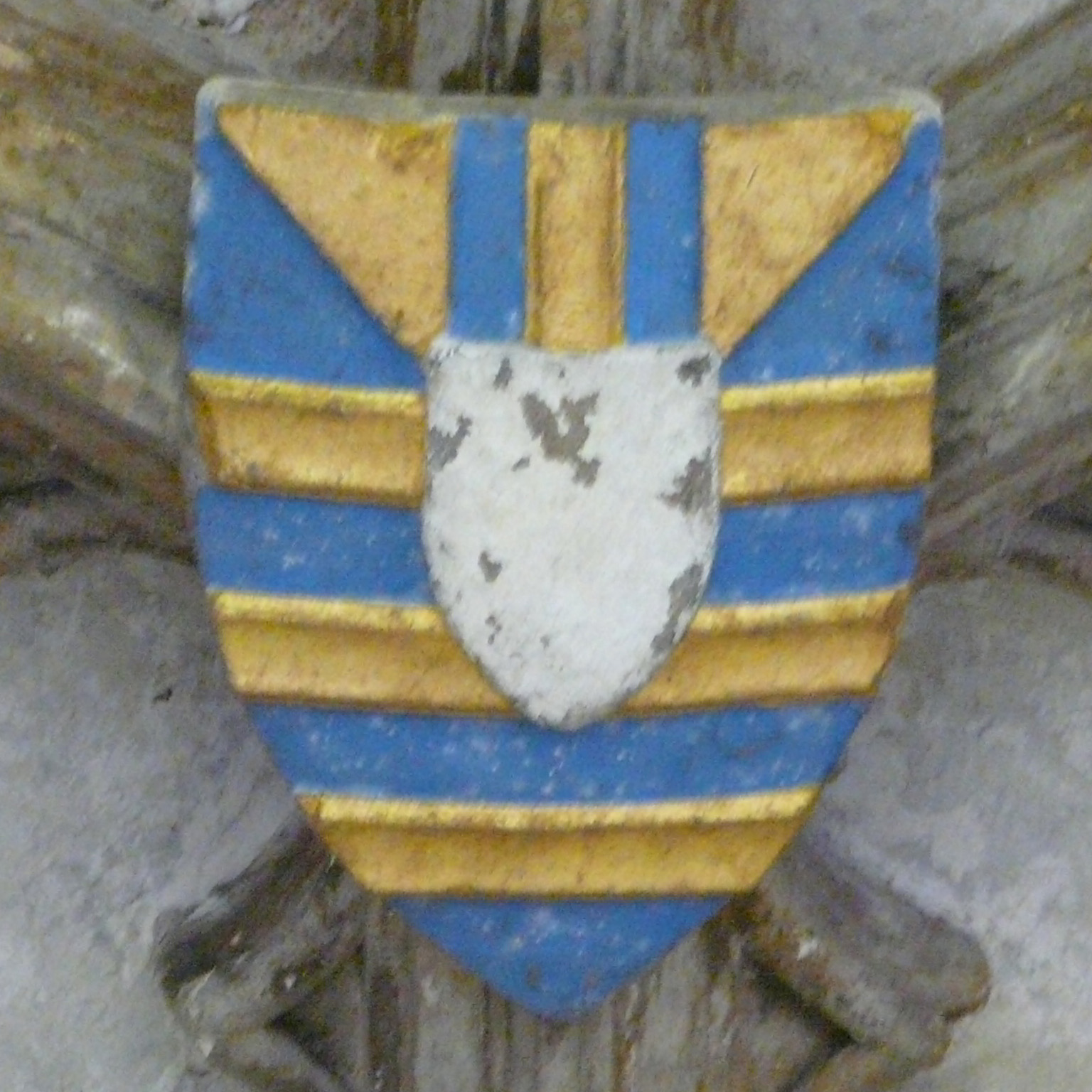
A roof boss in the cloisters at Canterbury cathedral. The cloisters were rebuilt in the 15thC but repainting over the years may have introduced changes.
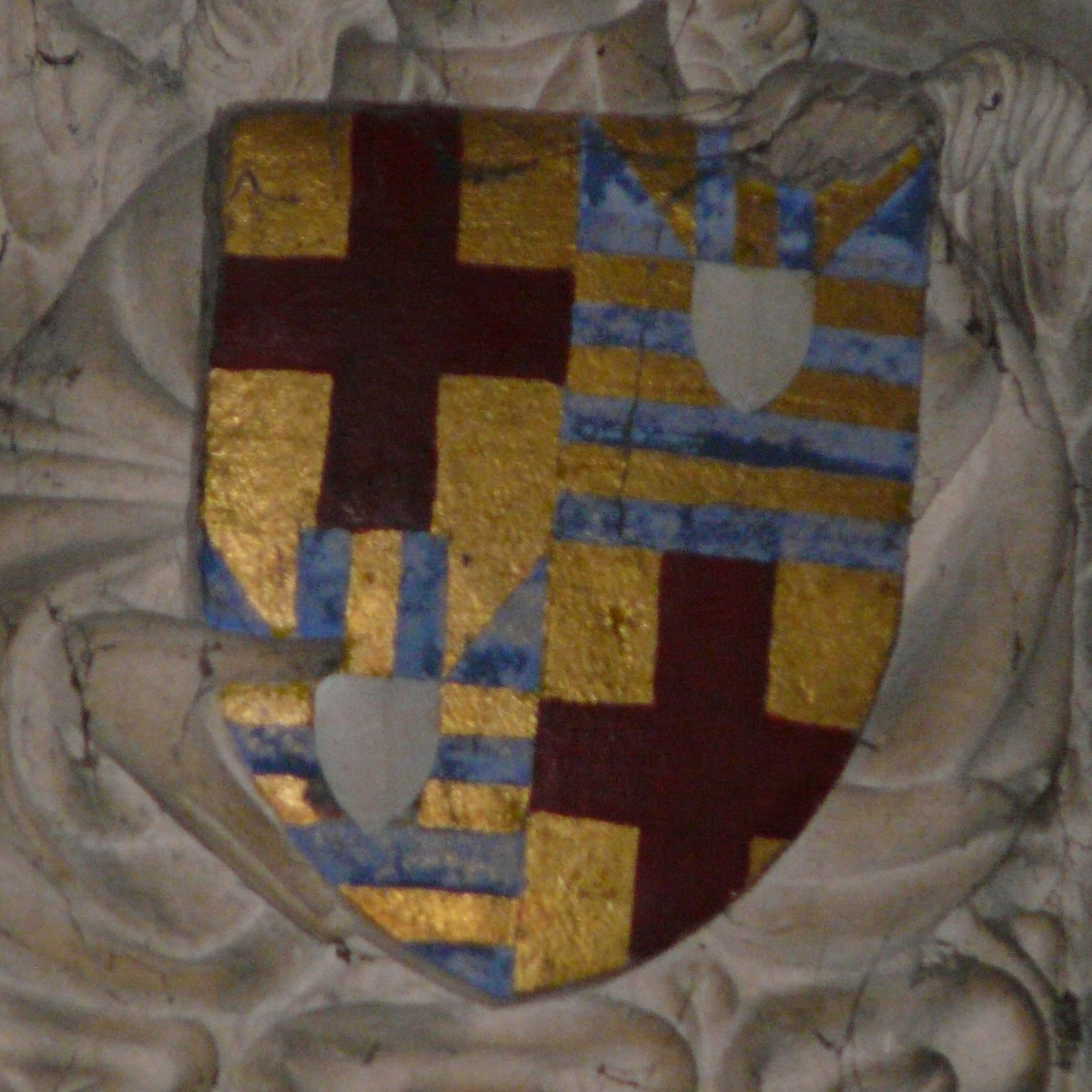
The arms of Philippa, Countess of Ulster at Cirencester. She was married to Edmund Mortimer, 3rd Earl of March.
Younger sons had to difference the Mortimer arms from those of the head of the house. Most of these differences were quite temporary, but one survived for many years. Roger Mortimer of Chirk (d1326) was a younger son of Roger Mortimer (d1282). He differenced his arms by making the central escutcheon ermine rather than silver. His descendants kept the ermine shield and it was subsequently passed down through the female line and became a quartering in the arms of several families, including those of Robert Dudley, Earl of Leicester in Elizabethan times.
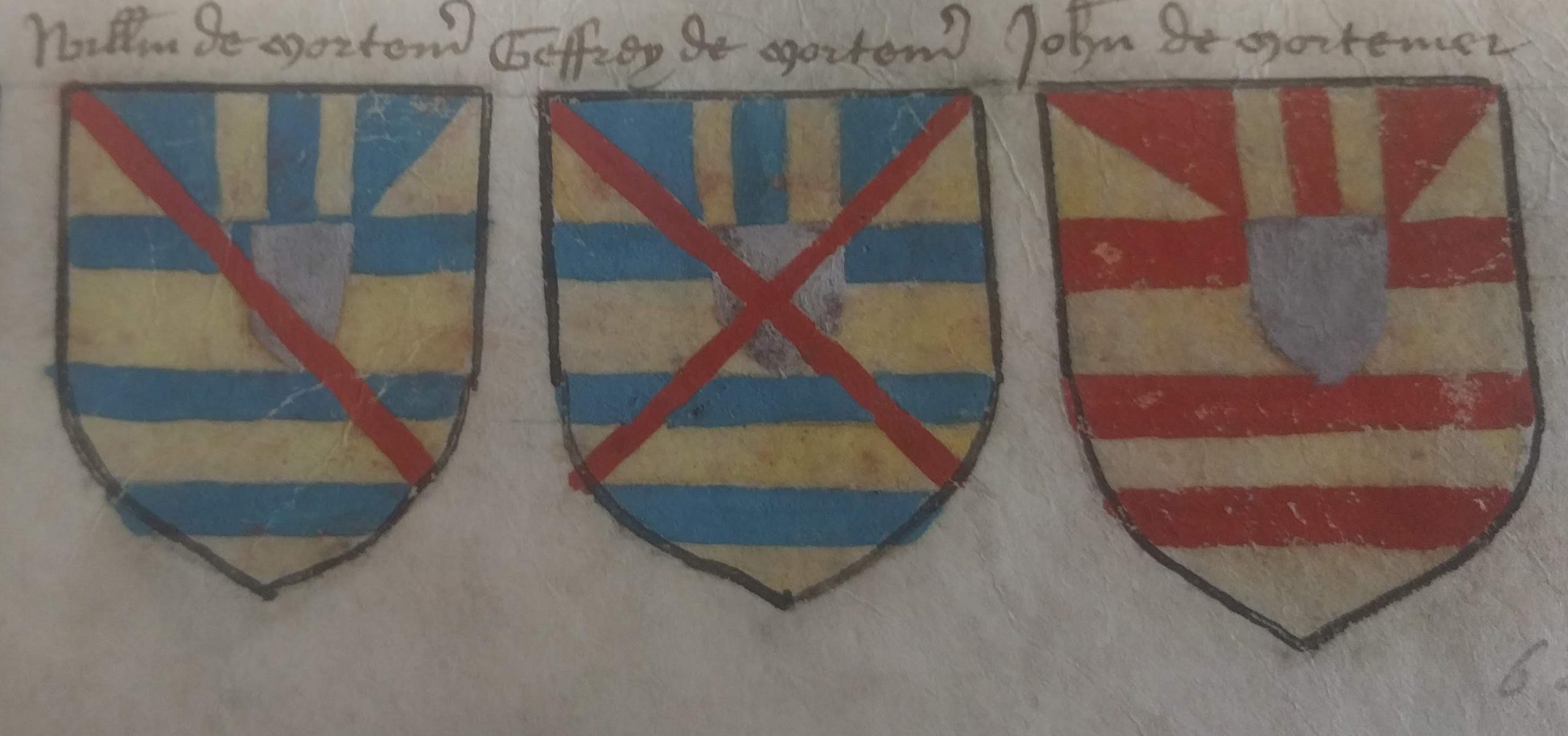
Three sons of Roger Mortimer (d1282):
William (d1297), Geoffrey (d1273) and John (d1315)
from the Fitzwilliam version of the Heralds’Roll
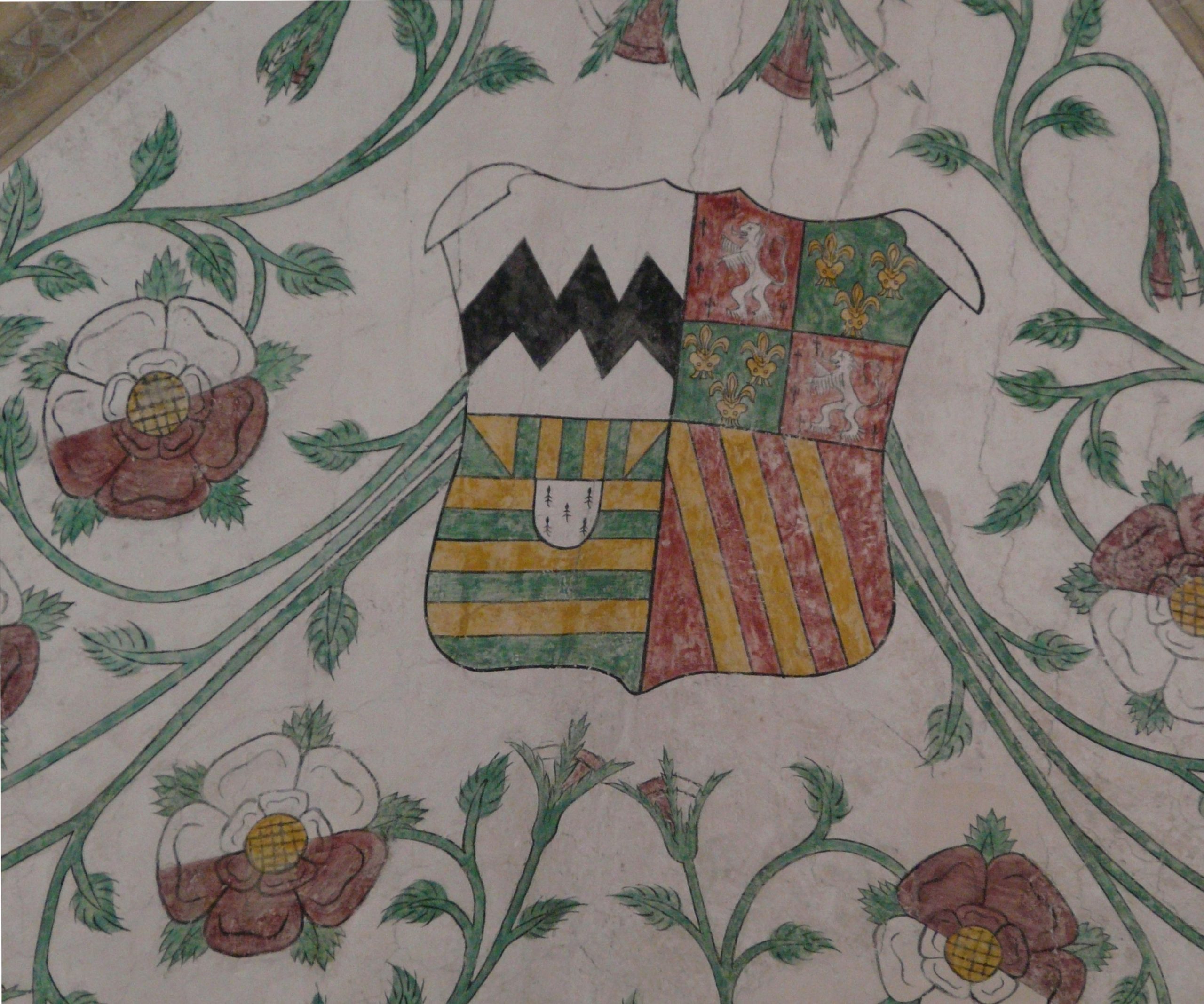
On the ceiling of Boxgrove Priory in West Sussex.
The arms of Mortimer of Chirk, with the ermine escutcheon,
included on the shield of Thomas West (d1554) 9th Baron De La Warr.
Some families that were closely associated with the Mortimers used coats of arms clearly based on their arms. Both the examples shown below were tenants of the Mortimers at some stage.
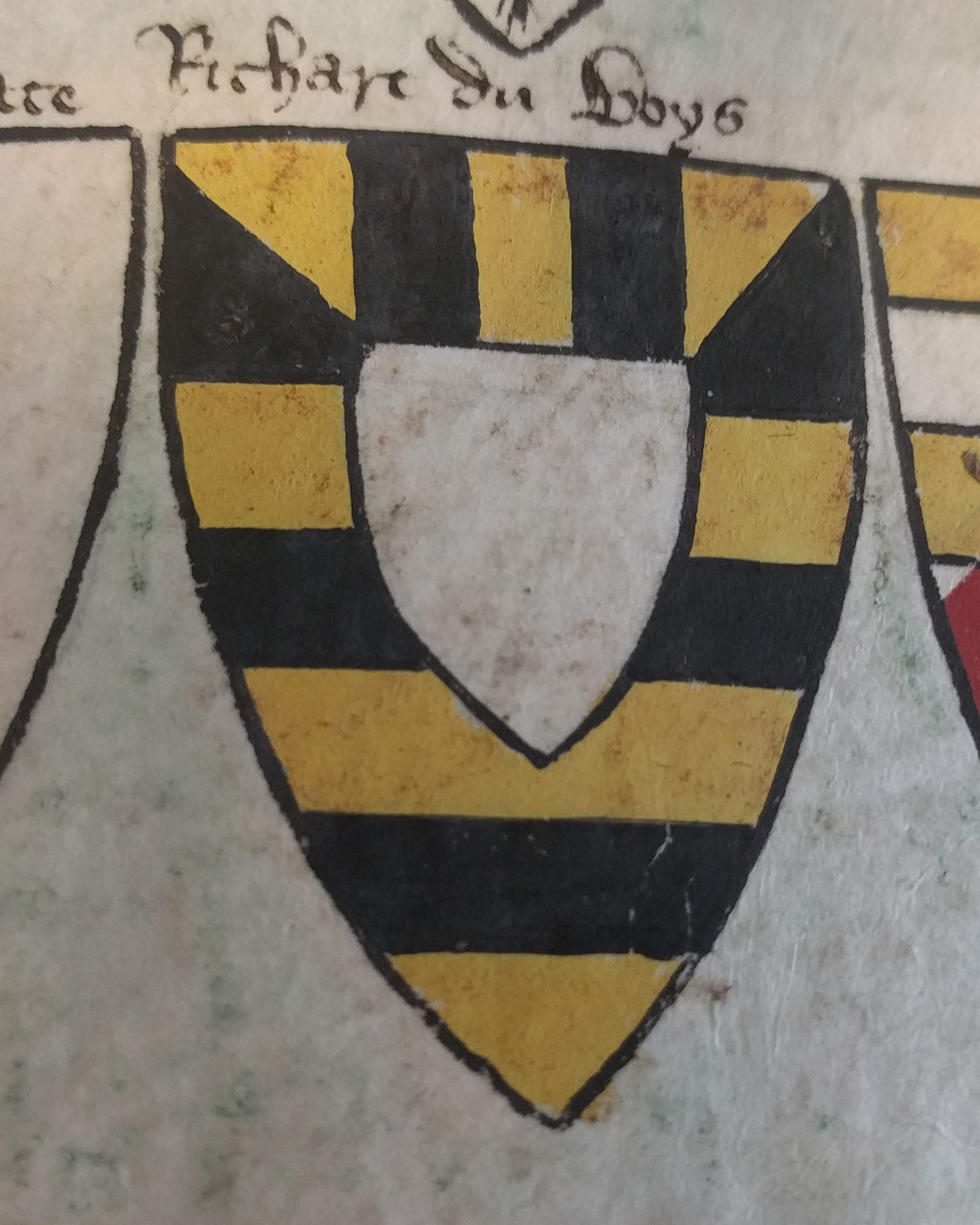
Richard de Boys
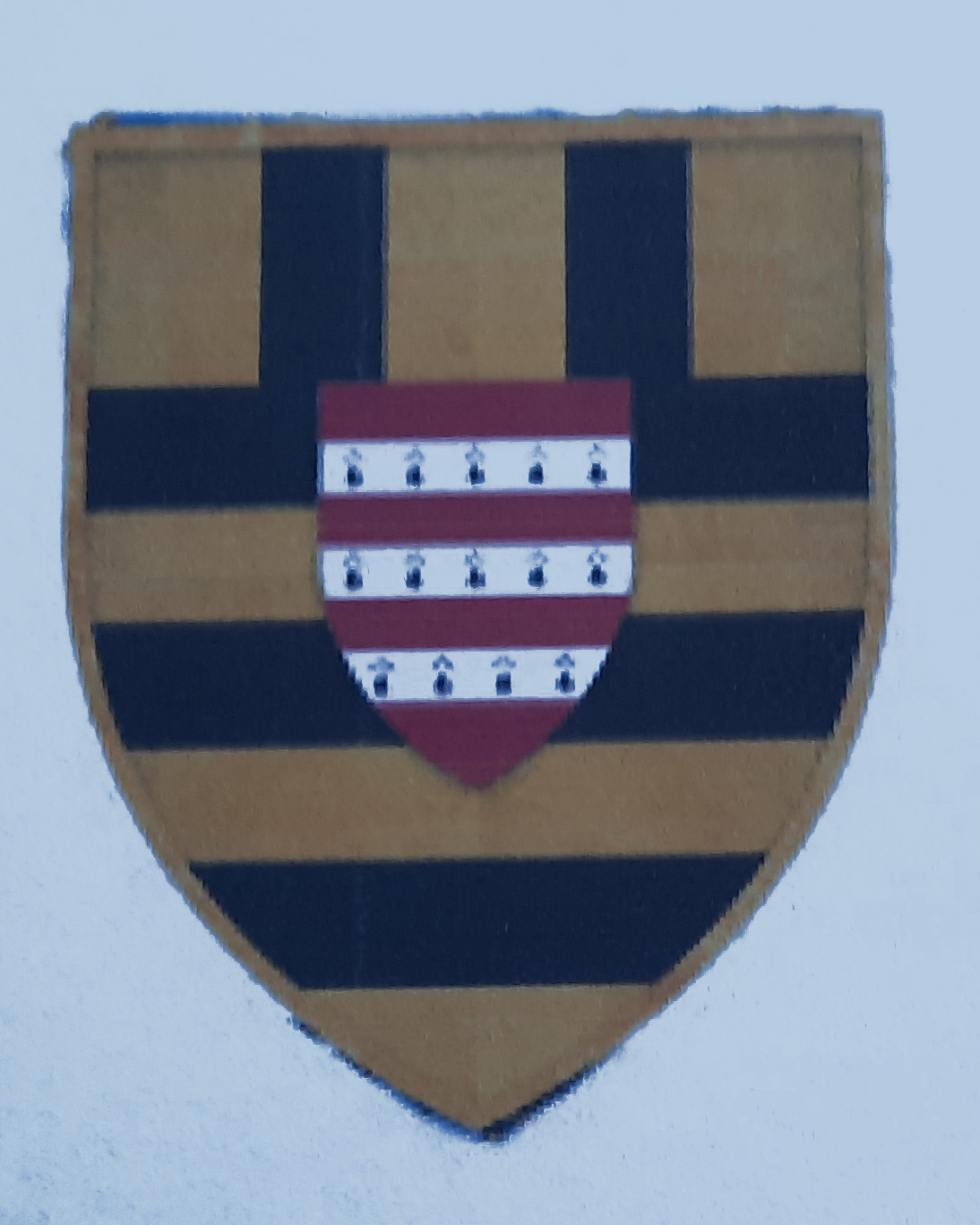
The arms of Burley
There were other Mortimer families in Medieval England with different coats of arms. Some of these may be branches of the Mortimers of Wigmore which existed before the widespread adoption of heraldry.
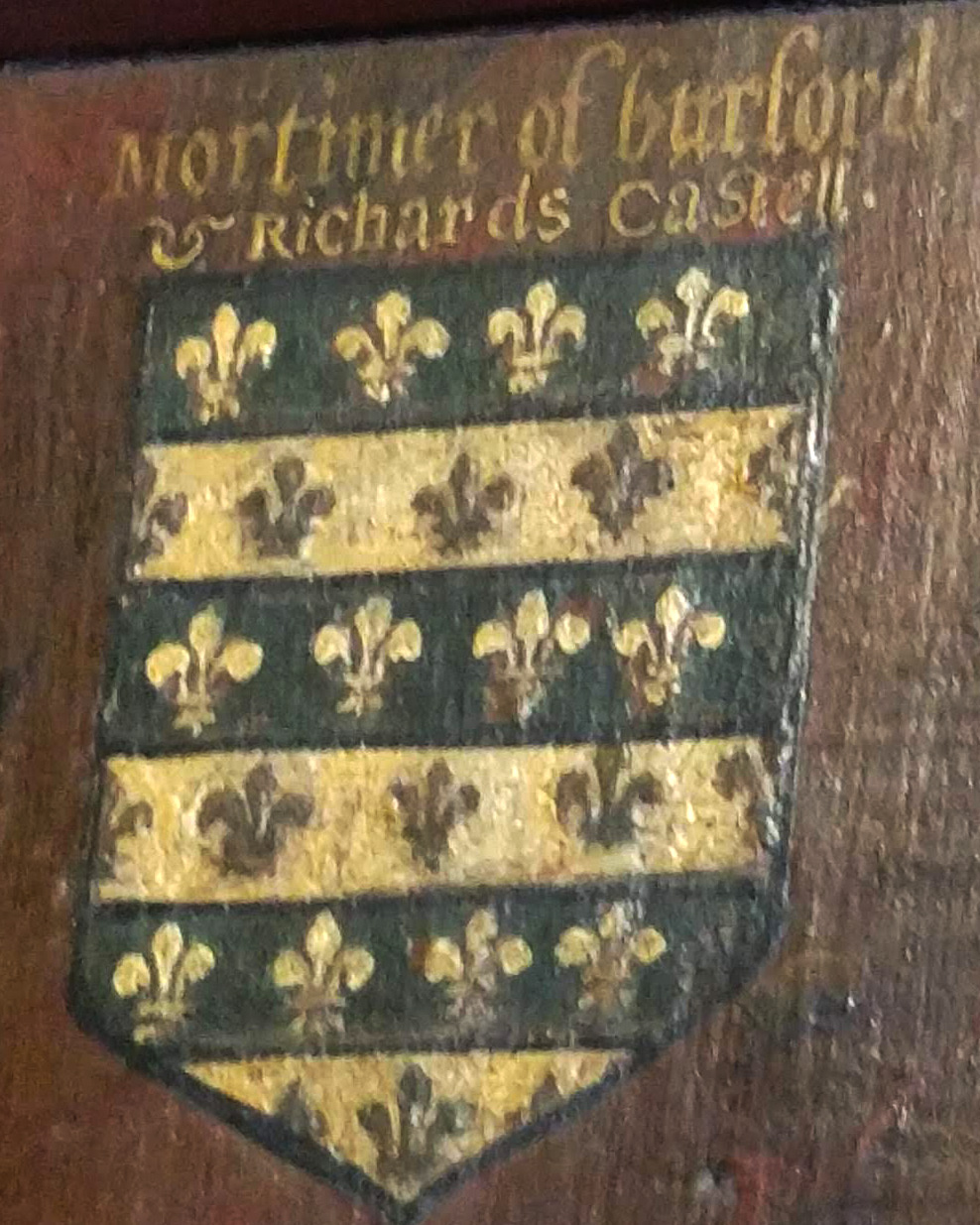
The Mortimers of Burford & Richards Castle
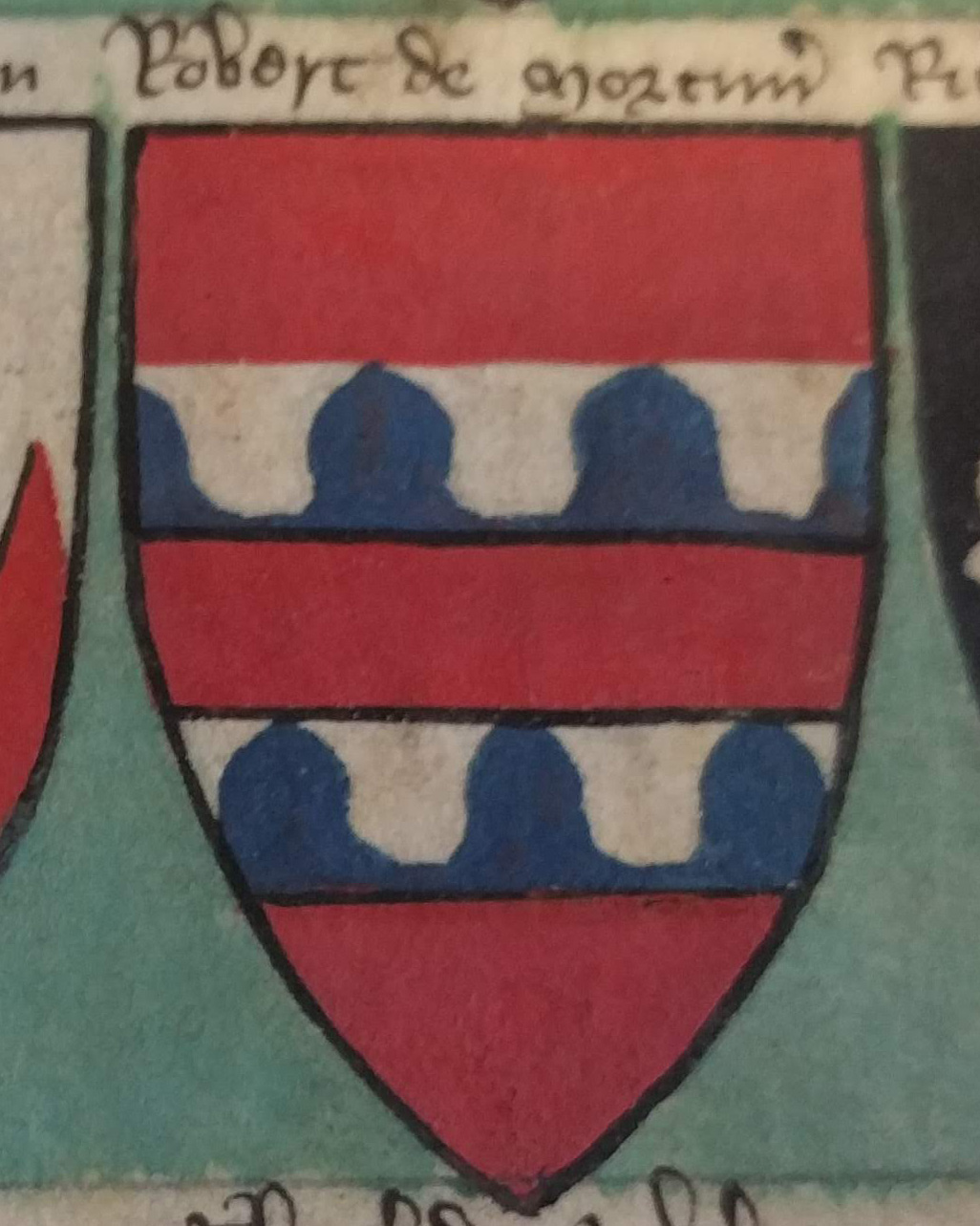
The Mortimers of Richards Castle